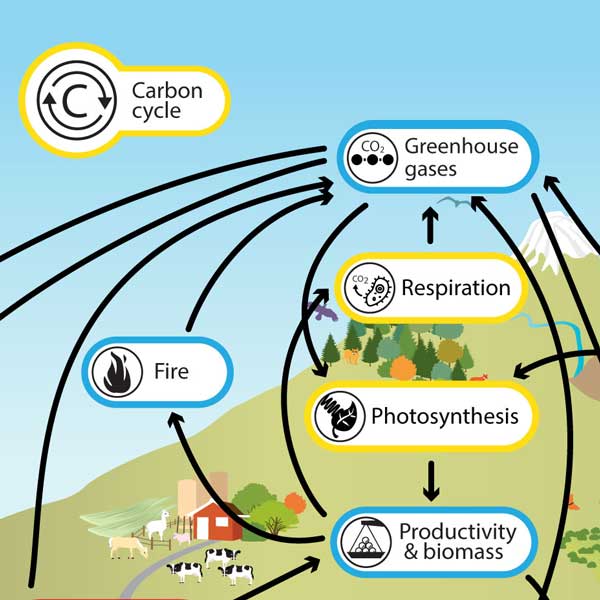UK Government Issues Security Strategy Highlighting Emerging Threats and SDG Implications
Overview of the National Security Strategy
The UK government has released its latest National Security Strategy, emphasizing the need for preparedness against potential attacks on British soil. This strategy outlines a broad spectrum of threats facing the UK, including military, cyber, and diplomatic challenges.
Key Threats Identified
- Russian Military and Cyber Aggression
- Russia’s military buildup and cyber-attacks pose significant risks to UK infrastructure and security.
- Persistent threats to undersea fibre-optic cables, which carry 99% of the UK’s digital data, have been highlighted as critical vulnerabilities.
- Indirect and sub-threshold activities, including sabotage and nuclear rhetoric, aim to constrain UK and NATO decision-making.
- Iranian Hostile Activities
- Iran’s alliance with Moscow and increasing attacks on dissidents abroad represent a growing threat on UK soil.
- The regime’s efforts to silence critics directly threaten UK national security.
- China’s Strategic Challenge
- Despite increased espionage and interference, China is described as a “challenge” rather than a direct threat.
- The government advocates for engagement to reduce risks of misunderstanding and poor communication.
Government Response and Defence Commitments
- Keir Starmer, attending the NATO summit, pledged to meet NATO’s target of 5% GDP defence spending by 2035.
- The strategy calls for a major ramp-up of the UK’s defence industry, focusing on drones, submarines, and artificial intelligence capabilities.
- Preparation for potential wartime scenarios on UK soil is emphasized for the first time in many years.
Implications for Sustainable Development Goals (SDGs)
The National Security Strategy intersects with several SDGs, underscoring the importance of security in sustainable development:
- SDG 16: Peace, Justice, and Strong Institutions
- Addressing threats from hostile states supports the promotion of peaceful and inclusive societies.
- Efforts to counter cyber-attacks and sabotage contribute to building resilient institutions.
- SDG 9: Industry, Innovation, and Infrastructure
- Investment in defence technology such as AI and drones aligns with fostering innovation and resilient infrastructure.
- Protecting critical digital infrastructure like undersea cables ensures sustainable industrial development.
- SDG 17: Partnerships for the Goals
- Engagement with international partners, including NATO allies and China, supports global partnerships for peace and security.
- SDG 3: Good Health and Well-being
- The previous focus on pandemic resilience and vaccine manufacturing, though less emphasized in this review, remains relevant to health security.
Comparative Analysis with Previous Security Reviews
- The current strategy marks a shift from the 2019 review, which prioritized pandemic resilience and vaccine manufacturing.
- China’s role is treated with more nuance, avoiding a direct threat label despite increased espionage activities.
- Foreign policy rhetoric shows some divergence, with government officials expressing differing views on China’s threat level.
Conclusion
The UK’s National Security Strategy outlines a comprehensive approach to emerging global and domestic threats, with clear implications for achieving Sustainable Development Goals related to peace, innovation, and partnerships. The government’s commitment to increased defence spending and technological advancement aims to strengthen national resilience while balancing diplomatic engagement.
1. Sustainable Development Goals (SDGs) Addressed or Connected
- SDG 16: Peace, Justice and Strong Institutions
- The article discusses national security threats including military aggression, cyber-attacks, sabotage, and hostile state activities on UK soil.
- It highlights the need for strong institutions to manage security and defence challenges.
- SDG 9: Industry, Innovation and Infrastructure
- The focus on ramping up defence industry capabilities, including drones, submarines, and artificial intelligence, relates to innovation and infrastructure development.
- Protection of critical infrastructure such as undersea fibreoptic cables is emphasized.
- SDG 3: Good Health and Well-being
- While less emphasized in this review, the previous security review’s focus on pandemic resilience and vaccine manufacturing connects to health and well-being.
- SDG 17: Partnerships for the Goals
- References to NATO alliances and international cooperation against threats imply the importance of global partnerships.
2. Specific Targets Under Those SDGs Identified
- SDG 16: Peace, Justice and Strong Institutions
- Target 16.1: Significantly reduce all forms of violence and related death rates everywhere – implied by preparing for and preventing attacks on UK soil.
- Target 16.6: Develop effective, accountable and transparent institutions at all levels – linked to government security strategy and defence spending commitments.
- Target 16.10: Ensure public access to information and protect fundamental freedoms – relevant to managing foreign influence and espionage.
- SDG 9: Industry, Innovation and Infrastructure
- Target 9.1: Develop quality, reliable, sustainable and resilient infrastructure – related to protecting undersea cables and critical digital infrastructure.
- Target 9.5: Enhance scientific research and upgrade technological capabilities – connected to increased focus on AI and defence technology.
- SDG 3: Good Health and Well-being
- Target 3.d: Strengthen the capacity of all countries for early warning, risk reduction and management of national and global health risks – referenced by previous pandemic resilience efforts.
- SDG 17: Partnerships for the Goals
- Target 17.16: Enhance the global partnership for sustainable development – indicated by NATO cooperation and international security alliances.
3. Indicators Mentioned or Implied to Measure Progress
- SDG 16 Indicators
- 16.1.4: Proportion of population that feel safe walking alone – implied by concerns over domestic security threats.
- 16.6.1: Primary government expenditures on security and defence as a proportion of total government expenditure – linked to the commitment to spend 5% of GDP on defence by 2035.
- 16.10.1: Number of verified cases of attacks on journalists, human rights defenders, and others – indirectly related to foreign interference and espionage.
- SDG 9 Indicators
- 9.1.2: Passenger and freight volumes, by mode of transport – relevant to infrastructure resilience including undersea cables.
- 9.5.1: Research and development expenditure as a proportion of GDP – connected to defence industry ramp-up and AI development.
- SDG 3 Indicators
- 3.d.1: International Health Regulations (IHR) capacity and health emergency preparedness – referenced by prior pandemic resilience focus.
- SDG 17 Indicators
- 17.16.1: Number of countries reporting progress in mutually agreed international frameworks – implied by NATO and allied cooperation.
4. Table of SDGs, Targets and Indicators
| SDGs | Targets | Indicators |
|---|---|---|
| SDG 16: Peace, Justice and Strong Institutions |
|
|
| SDG 9: Industry, Innovation and Infrastructure |
|
|
| SDG 3: Good Health and Well-being |
|
|
| SDG 17: Partnerships for the Goals |
|
|
Source: theguardian.com







